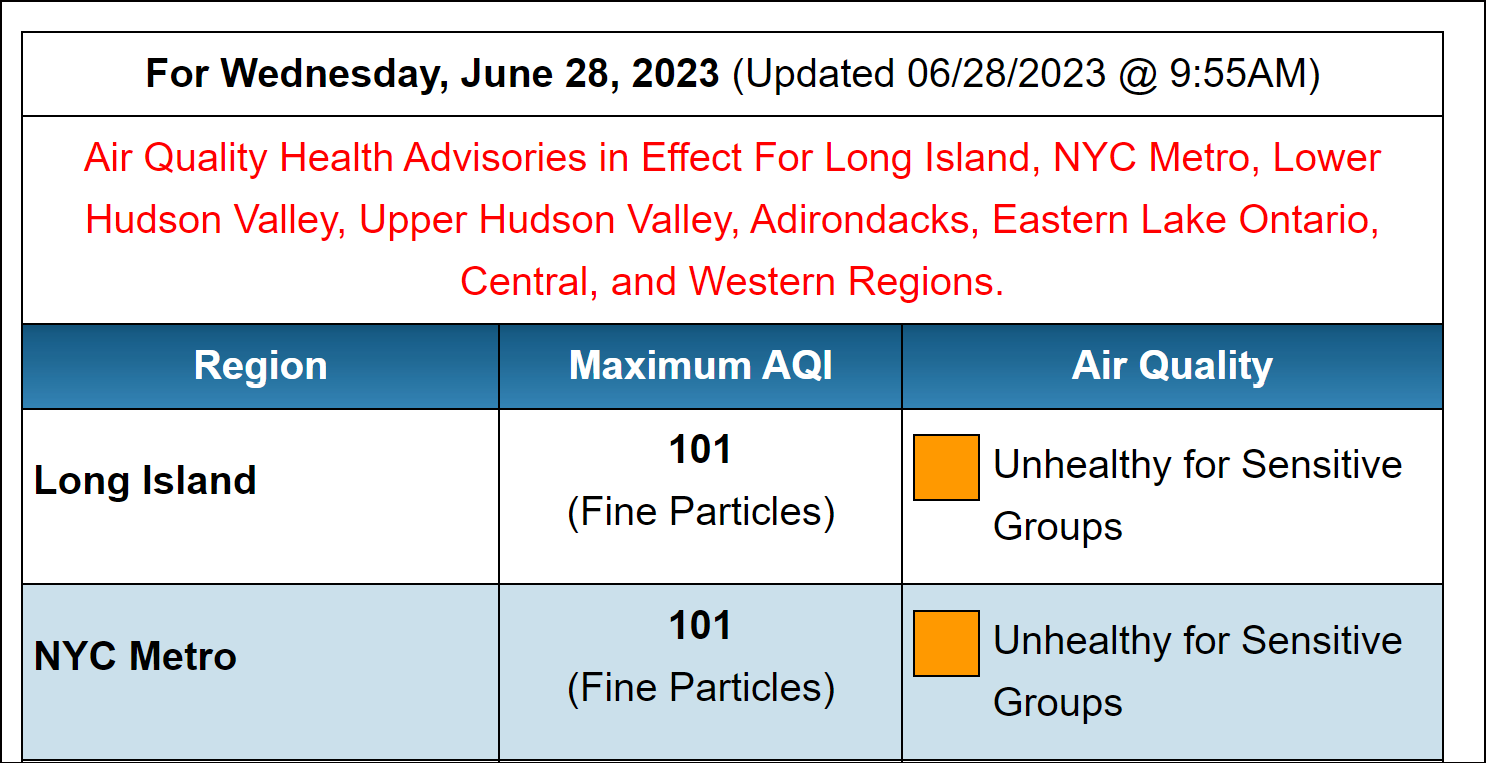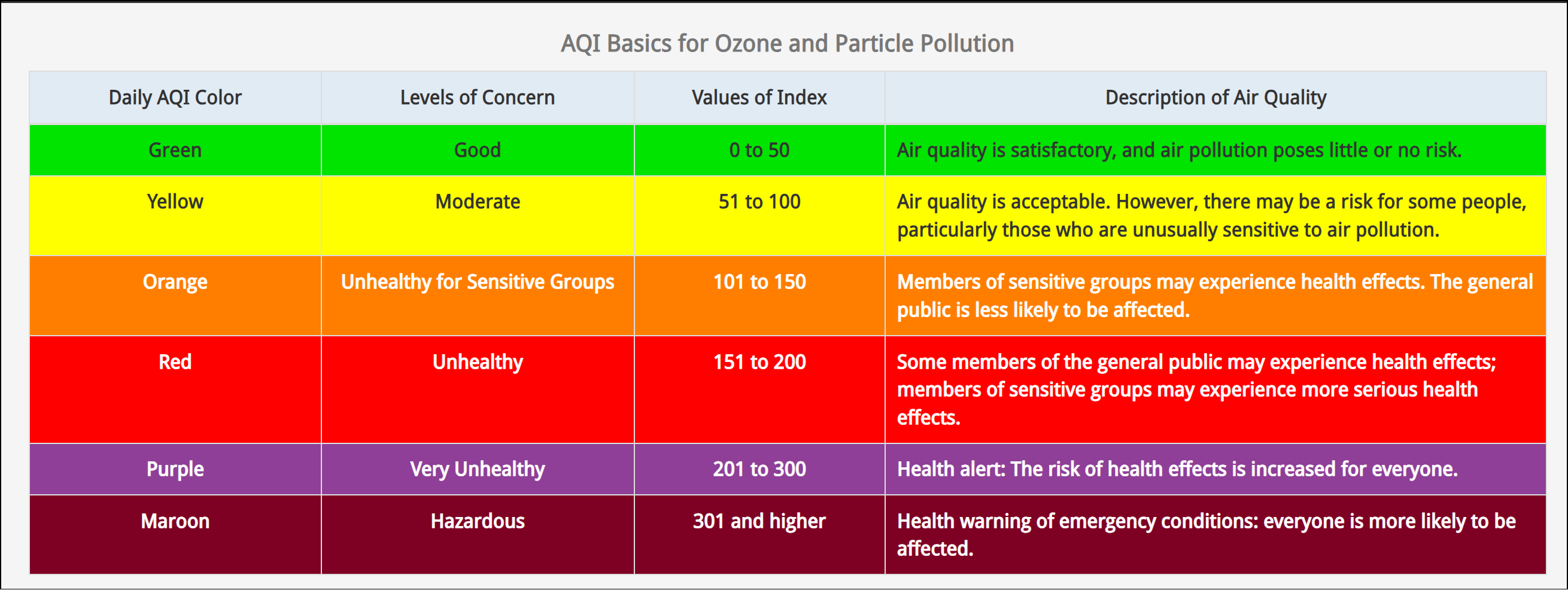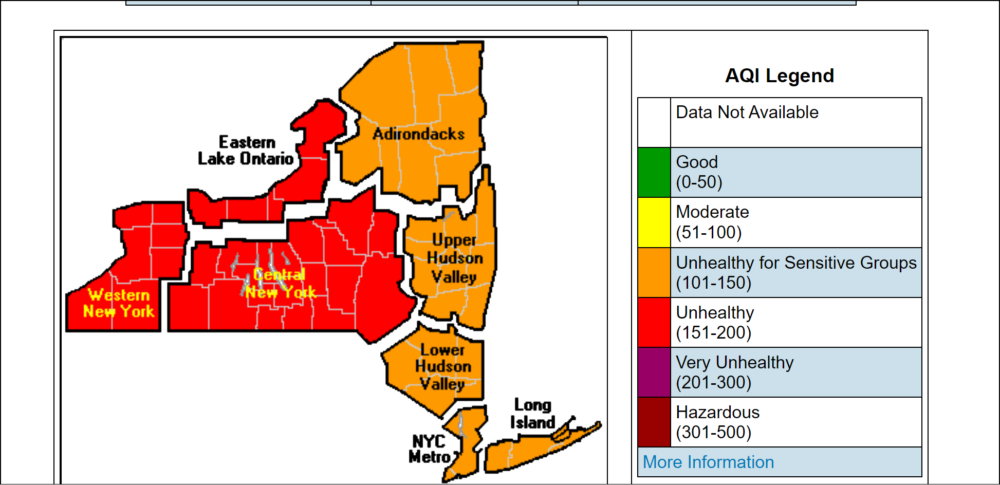
Update: The state said Wednesday that air quality is deteriorating very quickly as a result of the Canadian wildfires.
Residents should be prepared for Air Quality Index levels ranging from ‘Unhealthy for Sensitive Groups’ to ‘Unhealthy’ throughout the state Wednesday and Thursday, the state said.
See Airnow.gov
—-
An advisory on air quality health advisory was expanded Wednesday to include the entire state as smoke from Canadian wildfires continues to come into New York.
Air in Western New York, Central New York, and the Eastern Lake Ontario regions is forecast to be ‘Unhealthy’ for all New Yorkers, while the forecast for the remainder of the state, including New York City and Long Island, is ‘Unhealthy for Sensitive Groups.’
The governor also announced the first-time use of emergency cell phone alerts, which will be used to warn New Yorkers if air quality index exceeds the 200 threshold for ‘Very Unhealthy’ air and sustained for longer than an hour. The alerts will be transmitted via the Wireless Emergency Alert system, managed by the State Division of Homeland Security and Emergency Services.
“With smoke from the Canadian wildfires once again impacting air quality throughout our state this week, we’re urging New Yorkers to remain vigilant,” Governor Hochul said. “We’re activating emergency cell phone alerts to ensure New Yorkers have the latest information and are continuing to coordinate with local counties to monitor conditions and distribute masks. I encourage all New Yorkers to stay informed about the latest updates and take the necessary precautions to protect yourselves and your loved ones.”
Significant near-surface smoke impacts are not expected to reach Eastern New York, including New York City and Long Island, until late afternoon. However, conditions are likely to deteriorate quickly once the smoke moves in. State Agencies continue to closely monitor air quality statewide as smoke is forecast to continue moving to the eastern portions of New York State on Thursday, June 29. While Air Quality Index levels are forecast to range from ‘Unhealthy for Sensitive Groups’ to ‘Unhealthy’ for all during this time, DEC and DOH issue Air Quality Health Advisories and corresponding guidelines based on 24-hour forecasts and one-hour values may exceed forecast values in these regions. Visit dec.ny.gov for updated forecasts and information about air quality index levels.
Hundreds of thousands of high-quality N95-style masks have been made available to New Yorkers to address air quality impacts. In New York City, the Metropolitan Transportation Authority, Port Authority, and the Office of Parks, Recreation and Historic Preservation are distributing masks to commuters at major transit hubs and state parks. Additional masks are being made available to counties outside of New York City at State-run stockpiles for further distribution to the public.
Masks are available at the following locations:
- Grand Central Terminal
- Penn Station
- Fulton Center
- Jamaica Station
- Main Concourse of the Port Authority Bus Terminal, South Wing
- Atlantic Avenue, Brooklyn
- Grand Concourse, Bronx
- Shirley Chisholm State Park
- Clay Pit Ponds State Park Preserve
- Denny Farrell Riverbank State Park
- Roberto Clemente State Park
Transit authorities across the state are utilizing public address systems, bus headway signs, social media and other electronic signage to provide air-quality related safety information directly to customers, including:
- Metropolitan Transportation Authority
- NassauTRANSIT
- Westchester County Bee-Line
- Broome County Transit
- Capital District Transportation Authority
- Central New York Regional Transportation Authority
- Rochester Genesee Regional Transportation Authority
- Niagara Frontier Transportation Authority
The higher the AQI value, the greater the level of air pollution and the greater the health concern. For example, an AQI value of 50 or below represents good air quality, while an AQI value over 300 represents hazardous air quality.


